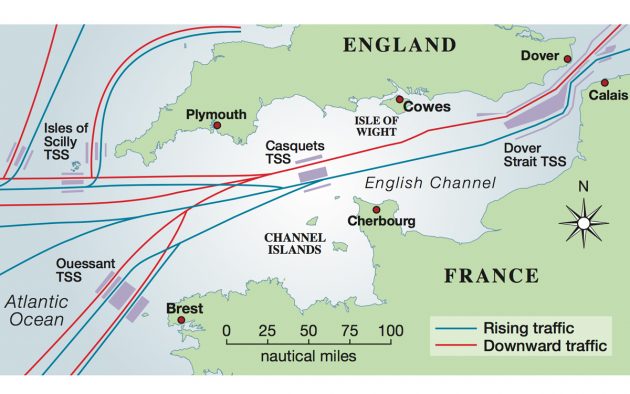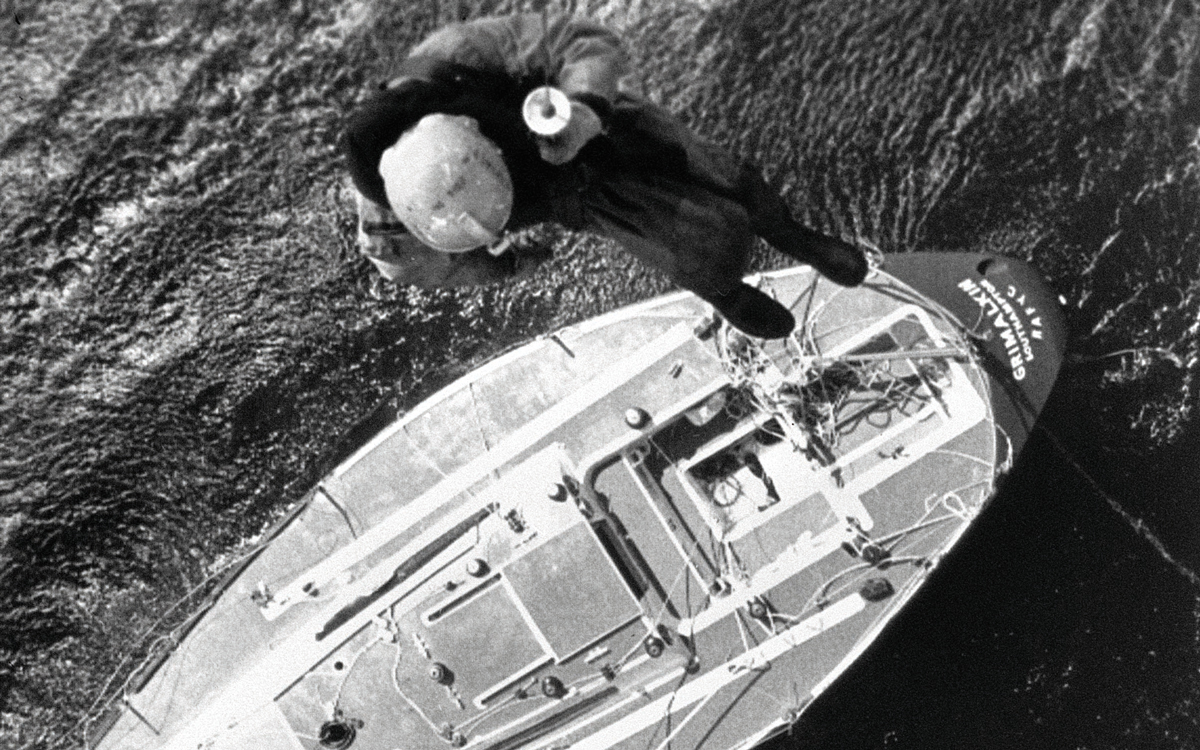Pro navigator Mike Broughton explains the new challenges that the revised Fastnet course will present for next year's entrants
Discovering that the Rolex Fastnet Race will finish in Cherbourg for 2021 and 2023, I was initially very open minded about the change, although it always seems a risky move to modify a successful formula.
I am sure Cherbourg will do a fabulous job at embracing the race. Like Plymouth, the harbour is huge and the French public ‘get’ offshore yacht racing. I have enjoyed the Cherbourg welcome before in races like the Tour Voile. For many it will seem very unusual sitting in a French restaurant, retelling tales of their Fastnet derring-do (note to self: remember to book accommodation very early).
Logistics haven’t been great in Plymouth for a long time and it feels as if there has been a lack of imaginative thinking regarding berthing at the finish. Look at a Plymouth Harbour chart and you’ll see the plethora of places where you could insert temporary jetties and berths, without even thinking about asking the Royal Naval Dockyard for help.

TSS movements are extremely busy off Cherbourg, as this AIS image shows. Photo: marinetraffic.com
My concerns about the new route relate to navigating the shipping lanes and the Casquets Traffic Separation Scheme (TSS), with strong tidal streams on the south side of the Channel. It will be a new challenge, so surely we should say: ‘bring it on’? But it isn’t that simple. Presently the Fastnet Race routes around a mix of four TSSs (three around the Isles of Scilly), but these lanes are not at all busy.
Sailing on the last leg to Cherbourg, the fleet will now have to pass close to the Casquets TSS, and this traffic scheme probably handles about 20 times the traffic of the busiest Scilly TSS off Land’s End. Just take a moment to look at the AIS picture (above) from MarineTraffic.com – the red coloured vessels are all tankers and the green ones are other merchant vessels.
There has been offshore racing near Cherbourg for 100 years, but not with an armada of 400 to 500 yachts, albeit finishing over a number of days. Obviously boats will be more spaced out for the leg from the Scillies to France, but in light winds we could still get big ‘log jams’ in strong tidal streams.
Article continues below…
Farewell Plymouth – Fastnet Race finish will move to France on 96th anniversary of historic event
This is the first time that the finish of the biennial 605-mile offshore from Cowes has ever changed. The new…
Fastnet 79: Could sailing’s biggest disaster ever happen again?
Back in 1979, Ted Turner’s Tenacious won the Fastnet Race, with a corrected time of 3 days 8 hours. Over…
Shipping situations
Fast forward to August 2021, and picture the last 50 miles of the race approaching the finish in a seasonal high pressure system and light winds. Crossing those shipping lanes at night in five knots of wind, even with your AIS transmitting, will lead to some scary close encounters.
Now overlay that AIS picture with a close fleet of Class 40s and say another 20 other race boats crossing the lanes together: it will definitely be enough to bring any well versed captain out in a cold sweat, never mind a young officer of the watch whose first language may be neither English nor French!
There are a number of ways this situation could be managed for the sake of safety. For example, in very light winds, the Sailing Instructions could be amended to offer the option of ‘put your engines on and note the time, then reposition or re-anchor when clear of the Shipping Lanes or TSS’. This option is currently used on the RORC Middle Sea Race when transiting the Messina Straits, where an Italian Coastguard vessel may tell a yacht to reposition.
It would then be a case of hoping redress (time compensation) will come to the rescue (it does to an extent for the race officer, but hardly ever for the sailors). Redress is very hard for protest committees to manage in offshore racing in strong tidal streams.
Rarely are people happy that an equitable outcome has been reached. Few international judges also have the navigation background – or are crazy enough to have spent much time toiling with anchors in 60m of water and three knots of tide in the dark.
Most sailors are aware of the tidal streams of the Alderney Race 15 miles to the west-northwest of Cherbourg (streams can be in excess of 10 knots at mid-tide), but few have enjoyed the prospect of anchoring against a foul tide in this area with the difficulties of retrieving it in the deep water. In strong wind against current, I recommend that it’s prudent to avoid it!
Six miles north of the Cherbourg breakwater the streams sluice east/west accelerated by the geography of the peninsula, with the waters of Seine Bay joining the waters of the rest of the Channel. Here a large area of strong streams (3-5 knots, with a depth of 50-60m) has huge potential to totally change your race result in sight of the finish line.
I welcome the extra navigational challenges, but know many new to the sport often say they feel ‘cheated’ when, after 600 miles of hard fought gains, any advantage over your opponent can evaporate in sight of the chequered flag. For me, the real concern is safety when crossing the very busy shipping lanes, as well as the need to take the best Rocna anchor and plenty of warp.
 About the author
About the author
Mike Broughton is a pro race navigator who has won many titles including World and European championships. He is a qualified MCA Master to captain superyachts and previously had a successful career in the Fleet Air Arm flying Sea King and Lynx helicopters. He used to be a RORC committee member and has competed in at least 15 Rolex Fastnet Races.
First published in the February 2020 edition of Yachting World.






